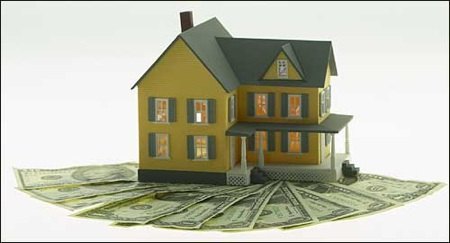The Truth About Using a HELOC to Buy A Car
One of our Best and Brightest wrote an insightful comment on how NOT to buy a car in another thread. I asked flashpoint to expand on his advice for your edification.
If you purchase a car using your Home Equity Line of Credit (HELOC), it only makes sense to do so if:
#1 you are in excellent financial standing with excellent credit standing;
#2 you have a steady occupation with little risk of being laid off; and
#3 the entirety of the car price can be paid off with the HELOC.
It does not make sense to max out your HELOC on a vehicle unless it pays the entire amount of the vehicle. For example, buying an $80,000 BMW by using $40,000 of HELOC and financing the rest is a bad idea, because you end up not only paying the loan for the car + interest, but the Heloc + interest rate is added to your other debts.
This is a recipe for failure and has led to numerous people winding up behind on their bills, in foreclosure and forced into bankruptcy and liquidation of their personal assets.
The theory behind buying a vehicle using HELOC is that you will circumvent the interest rate of an auto loan. It makes sense if you are wealthy or disciplined, but there is risk involved.
First of all, if you buy the car with cash, you own it. A car is a depreciating asset and it loses value quickly in today’s market. If you find yourself requiring cash later on, you’d be forced to sell the vehicle at a reduced priced just as you would if you had leased or financed. However, if you have a credit standing good enough to finance at low interest, over the long term, you have more choice in what to do with the vehicle without the upfront expense of basically adding a second mortgage payment to your home’s burden.
If you’re struggling with large credit card balances or have problem credit, a home equity loan might not be right for you.
Not everyone can make use of the mortgage-interest deduction when filing his or her income tax return, but if you’re using the deduction now on your first mortgage, odds are you’ll be able to use it on your home equity loan, too. IRS Publication 936, Home Mortgage Interest Deduction 6, lays it all out. Talk to a tax professional if you’re still not sure.
By being able to deduct the interest expense, you reduce the effective rate of interest on the loan. The interest expense on a conventional auto loan isn’t tax-deductible.
Bankrate’s national average for a HELOC is 8.09 percent and 7.8 percent for a home equity loan. The national average for a three-year auto loan on a used car is 8.88 percent. If you’re in the 25-percent marginal federal income tax bracket the effective rate on the HELOC is about 6 percent.
A HELOC is a variable-rate loan, and the interest rate is normally tied to the prime rate. Since the prime rate moves in lock step with changes in the targeted federal funds rate, and that rate has been rising steadily for more than two years, it takes a bit of courage to sign up for a HELOC to finance your car.
In contrast, a home equity loan will have a fixed interest rate, and the loan payments are self-amortizing, meaning the payments are large enough to pay the interest expense and pay off the loan over the life of the loan. In the early years of a HELOC, its required loan payments are interest-only, and you have to have the financial discipline to make principal payments, too.
I also suggest you be very wary of people who suggest you buy into programs such as Ufirst’s MMA.
The gist of this system is that you can reduce your mortgage lifespan by paying it off faster and paying less interest.
I have a friend who pimps these “computer software” MMAs for $3000 a pop. The problem is that a HELOC can be called at any time by a US bank. They reserve the right. If you max yourself out and your HELOC gets called, you can be in some serious shit.
I recommend that you reserve HELOC for home improvement not plasma TVs or sound systems . . . I mean home improvements such as flooring, roofing, etc. HELOC’s purpose is to be around just in case your house springs a leak or a major repair comes up. It should not be treated as a piggy bank or a credit card.
More by Robert Farago
Latest Car Reviews
Read moreLatest Product Reviews
Read moreRecent Comments
- ToolGuy Why would they change the grille?
- Oberkanone Nissan proved it can skillfully put new frosting on an old cake with Frontier and Z. Yet, Nissan dealers are so broken they are not good at selling the Frontier. Z production is so minimal I've yet to see one. Could Nissan boost sales? Sure. I've heard Nissan plans to regain share at the low end of the market. Kicks, Versa and lower priced trims of their mainstream SUV's. I just don't see dealerships being motivated to support this effort. Nissan is just about as exciting and compelling as a CVT.
- ToolGuy Anyone who knows, is this the (preliminary) work of the Ford Skunk Works?
- Kwik_Shift_Pro4X I will drive my Frontier into the ground, but for a daily, I'd go with a perfectly fine Versa SR or Mazda3.
- Zerofoo The green arguments for EVs here are interesting...lithium, cobalt and nickel mines are some of the most polluting things on this planet - even more so when they are operated in 3rd world countries.


































Comments
Join the conversation
mjposner, You indicate that your HELOC rate is at 2.25%, which is an amazing rate. But If you are in the 28% tax bracket, the effective rate is really 1.62%. And don't forget that most HELOC's are variable depending on the current prime rate. There is always a chance that in a year or two interest rates could go up, wiping out any savings you had over the fixed auto loan.
"Since the prime rate moves in lock step with changes in the targeted federal funds rate, and that rate has been rising steadily for more than two years, it takes a bit of courage to sign up for a HELOC to finance your car." Huh? Fed funds peaked in the fall of 2006 and has been falling ever since. Did you mean to say that at its current level of .25 it only has room to increase?